Resources
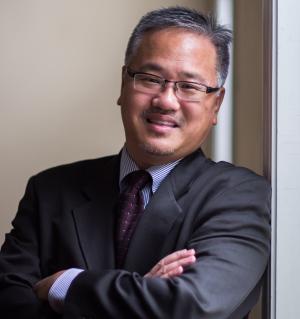
I titled this post after Trevor Noah’s introduction to the Black Panther film at the 2019 Oscars when he cited the Xhosa proverb, “Abelungu abazi uba ndiyaxoka.” Trevor translated it to mean: “'In times like these, we are stronger when we fight together than when we try to fight apart.” It turns out the proverb was an inside joke among South Africans who knew that he really said was, “White people don’t know I’m lying.” Ha! He got me, even though I’m of Korean descent. Nevertheless I still like the mock translation and the concept behind it. It is better to fight together. Some courses are a real challenge, and study groups are a strategic way for students to succeed. Here are some ways I think they make a difference in online education and some suggested practices. 1. Set up open virtual study hall hours online Many learning management systems (LMS) like Canvas integrate Zoom, Big Blue Button, or other video conferencing tools that allow instructors to create virtual rooms which are open 24/7. At any given hour during the day, a student can log into a room online and meet fellow classmates in a virtual study hall to collaborate on homework, prepare for quizzes, exchange notes, and discuss any aspect of the course. Even if one’s LMS does not include video conferencing as part of its platform, instructors can have students form their own Facebook or Google groups. The first step is to provide the virtual space for study groups to meet. Second is to help students organize. The easiest way is to coordinate groups based in the same time zones. It takes a bit of work, but using scheduling tools like Doodle can help manage competing calendars so everyone eventually finds common times to work together. 2. Assign group presentations where students collaborate and teach one another There is no faster way to have students learn from one another than to assign a presentation by small groups. In my New Testament courses, I often schedule student presentations on diverse topics on a weekly or bi-weekly basis. I put a sign-up sheet online using the discussion forums and lay out guidelines for the presentation in the syllabus. A week or two before a group presents, I meet with them through video conferencing, coach them on the topic, suggest readings, and ask them to meet on their own using the virtual study hall rooms. The presentations usually last about 8-10 minutes. Students use PowerPoint or Google Slides to video record their presentations using the tools provided by their LMS or with third-party programs like Screencast-O-Matic, and upload their video presentation onto the discussion forum for the class to watch. The rest of the class comments on the presentation by posting replies. Alternatively, if the course is synchronous, the group live-streams their presentation when we meet online. 3. Scaffold research projects and have students review one another’s work Especially with final research papers, I often “scaffold” the assignment by breaking up the paper into different parts and spread the due dates across the semester. I ask students to choose a paper topic, submit an initial bibliography, read the secondary literature and outline key points of debate, and step-by-step work on major sections of their paper until these sections are ready to be compiled together into a cohesive whole. Along the way, in small groups, students are asked to review one another’s work and receive suggestions for improvement. Peer suggestions cannot replace the feedback given by the instructor of the course, but I often find they offer a friendlier and easier way to receive critique. 4. Leave room for the random lone ranger and alternative assignments On occasion, a student might have such an unusual schedule that meeting together to do student-to-student collaborations is simply not possible. Such situations do not happen often, but when they do, I try to provide a fair alternative. I might, for example, ask a student to submit a short paper instead of working with other classmates on a video presentation. Whatever the substitute assignment, it’s important to be flexible. Successful student-to-student interaction requires that I take on a role other than “teacher.” The students teach themselves and one another. I plan, coordinate, and set up ideal virtual spaces for students to meet. Along the way, I learn from my students as well.

Teaching Religion in a Changing Public University reviews the teaching of religious studies in public universities, with exploration of the challenges and opportunities for the future. Dr. Gravett assesses the current status of the field within the challenges facing universities in general and humanities in particular as we move into the twenty-first century. She notes that: “Revolutionary changes in the higher education landscape call for sustained reflection on impact of these items on the structures in which academic work in religious studies happens and the conditions of faculty life. The advent of new educational technologies, the needs of more diverse student bodies, and alterations in the relationships between universities and communities also raise questions about how religious studies scholars and the programs they provide will evolve.” From this understanding, she provides a succinct and insightful analysis of the types of courses taught in religious studies programs and how these fare (or not) in new modalities impacted by technological change and digital learning. Dr. Gravett’s discussion of the challenges of an increasingly multicultural environment, with its religious pluralism, and the possible roles of religious studies scholars and programs, orient the reader toward present complexities and the potential of religious studies to not only survive but add increasing impact in the future. (From the Publisher)
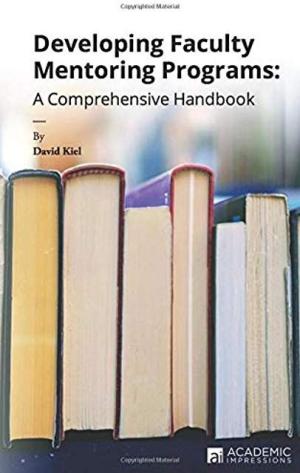
As institutions seek to increase faculty diversity, adopt increased standards for faculty productivity, and become more aware of the benefits of extending mentoring beyond early-career, it’s crucial to bring rigor and definition to your department’s mentoring efforts. David Kiel, who worked with faculty leaders to design mentoring programs for all of UNC-Chapel Hill’s professional schools and the College of Arts and Sciences, draws on years of research and experience to bring you this uniquely comprehensive handbook. This book includes practical strategies from a wide range of institutions, from community colleges to research universities. (From the Publisher)
Ground TransportationAbout a week prior to your travel you will receive an email from Beth Reffett (reffettb@wabash.edu) with airport shuttle information. This email includes the cell phone number of your driver, where to meet, and fellow participants with arrival times. Please print off these instructions and carry them with you.Contact Information on Day of TravelWabash Center: 800-655-7117After Hours: as directed in the travel email Venue Wabash CenterThe Travel Authority (to change flights)800-837-6568 Thommi Weliever thommi.weliever@altour.comShelly Costello shelly.costello@thetravelauthority.com
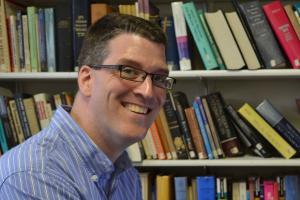
My most recent tweet (of almost ten thousand) was 40 weeks ago. My most recent Facebook status update (except for a brief "thank you" for birthday wishes in July) was 46 weeks ago. The previous three years, however, I have taught my main introductory course, "Introduction to the Hebrew Bible," as an open, freely-available, online event built almost entirely on social media, especially Twitter, WordPress blogs, and Google Docs. This was the Open Old Testament Learning Event, or "OOTLE." My use of social media in higher education was based on a belief in the power of making for learning, and on a utopian vision for the internet that was based on my own experience. Eventually, the failures of the major centralized social-media platforms to proactively account for systemic abuse of marginalized users led me to abandon our pioneer outpost of open learning, and to retreat with my students back into the familiar confines of "the devil I know," the closed learning management system or "LMS." Many educators will have some familiarity with the learning theory "constructivism" (sometimes "constructionism"). According to this model, learners do not simply "acquire" knowledge, but rather always "construct" knowledge by synthesizing their existing understandings with new information or insights. Less well known, however, is that according to a constructivist model, this knowledge-making is more likely to occur where learning happens socially and where learners collaboratively build artifacts that are publicly shared. As the internet age took hold, and learners began increasingly to build their knowledge in a world of information excess rather than a world of information scarcity, it was often remarked that content on the internet was composed by perhaps 1% of internet users. Perhaps 9% of users interact with this content, and some 90% only passively consume content. This is sometimes called the "1% rule" or the "90/9/1 rule." From computer science to the humanities, educators began to embrace the power of "maker culture" to unleash the potential of constructivist learning in individuals, and to remake the internet in the image of the whole body of its users. It was in this context that the use of social media in higher education began to spread like fire: classroom Twitter "back channels" or weekly synchronous "Twitter chats"; blogging assignments on open web platforms like WordPress; presentation or digital storytelling on YouTube; and Facebook groups and pages. Then in 2014 came "Gamergate," a campaign of organized harassment against female game designers and game enthusiasts, including frequent credible threats of sexual violence and murder. Gamergate provided a playbook for white supremacist organizations and eventually, it seems, even for Russian interference via "troll farms" in 2015-16 U.S. political discourse on Twitter, Facebook, and YouTube. ("Trolling" describes skillful, media-savvy practices in derailing or redirecting discourse, whether for pleasure, malice, or profit.) Even among social-media users apparently uninvolved in these large events, in became clear that the codes of conduct and anti-harassment policies dictated by the young, white "tech bros" of social media (Jack Dorsey of Twitter, Mark Zuckerberg of Facebook), could not provide marginalized users anything like the safe environment enjoyed by privileged users less likely to be targeted. This remains the case, skewed as these policies are toward favoring "free speech" in an absolute sense and leaving users to block malicious actors as best they can . . . only possible, of course, after the malicious acts have occurred. Even we relatively privileged users became accustomed to weary acknowledgements that "of course Twitter is a cesspool, but . . . " Eventually, "But. . . “ became for me, and for many educators in my circles, "But what?" and then "But nothing." It had become impossible to offer my learners a reasonable guarantee that they would enjoy equitable social-media experiences, regardless of how they chose to present their race, gender, sexual self-understanding, class, or other differences. As I consider shepherding learners again into the social-media space ("not yet, not yet"), I remain optimistic about decentralized platforms like Mastodon. It is clear that the "one size fits all" approach to codes of conduct and anti-harassment policies (as on Twitter and Facebook) is untenable. On Mastodon, a radical free-speech, no-holds-barred community can have its minimalistic code of conduct, while a more proactive, highly-moderated community can choose to federate with that group, or not. I have not given up on a commitment to learning via collaborative construction of publicly available artifacts, but I am once bitten . . .and will twice be shy of any monetized, centralized platform.

ePortfolios are web-based, student-generated collections of their work and reflections on their learning and growth. They are tools for students to synthesize and integrate their learning, inside and outside of the classroom, by critically reflecting on their academic and co-curricular experiences. I first learned about ePortfolios from George Kuh who visited our campus in the fall of 2016 and mentioned that they were the latest addition to the list of High Impact Practices that deepen student learning (https://www.aacu.org/leap/hips). As Bret Eynon and Laura Gambino note, ePortfolios can facilitate student inquiry into their own learning, reflection on their development and growth, and integration across disciplines, as well as curricular and co-curricular contexts (2017, 20). As repositories of student work, ePortfolios allow students to reflect on their academic learning at various stages of their undergraduate development. They facilitate critical reflection which has been theorized as a four-stage reflective cycle (presence in experience, description of experience, analysis of experience, and experimentation; Rogers 2002) or a three-step sequence (describing experiences objectively, examining experiences in light of learning goals, and articulation of learning that includes goals for future action; Ash & Clayton 2009). In ePortfolios, students can describe their work (research papers, leadership positions, etc.), analyze how it has contributed to their growth and development, and experiment with various future possibilities by tailoring their ePortfolios for different career paths and job opportunities. I have used ePortfolios in several different courses: first year seminars, upper-level seminars, directed individual study, and capstone courses. ePortfolios allow seniors and recent graduates to showcase their work, and they have been shown to improve performance in job interviews because students can readily recall what they have done over the course of their undergraduate career and cite specific examples of their transferrable skills. In my capstone course, I had students create a type of ePortfolio that included pages about themselves, their signature work, their co-curricular activities, their resume, and their contact information. On their signature work page, I had them describe their capstone project for the general public and reflect on what they had learned in their program. ePortfolios can be powerful for first year students as well. Some institutions, such as Indiana University-Purdue University Indianapolis (IUPUI) include ePortfolios within their first-year-experience programs. They have students create ePersonal Development Plans (ePDP) that enable students to increase awareness of themselves and others, set self-concordant goals, develop hope, and shape education and career plans (https://eportfolio.iupui.edu/). When students create ePortfolios in their first year, they can build on it over time, reflect on what they have learned at various points in their undergraduate career, and chart different pathways when their personal and professional goals change. They can generate robust repositories of what they have learned in their academic and co-curricular experiences. Not unexpectedly, the ePortfolios from my first year seminar were less developed than my capstone course. First year students, navigating new terrain and trying to get their bearings, reflected on what they did in high school and what they hoped to pursue in college. Some had clearly defined goals and career aspirations, while others were uncertain and open to various trajectories. But I think the ePortfolio served two important purposes: first, it clearly demarcated their new identity as a college student, and second, it allowed them to reflect on what they wanted to get out of their college experience in a private forum. Although most free ePortfolios–such as Weebly, Wix, and Wordpress–are public, subscription ePortfolio platforms such as Digication, Pebble Pad, and Taskstream allow students to keep their ePortfolios completely private, share with particular individuals (such as their instructors or classmates), share it within their university, or make it publicly accessible. Many students find such privacy to be novel. When I asked my first-year students if they kept journals or did any reflective writing, I was surprised when only one student raised her hand. The rest said that they used social media such as Facebook, Instagram, or Finsta (a hidden Instagram shared among friends). Instead of engaging in private reflection, they were posting and performing on public or semi-public websites. As a result, many found ePortfolios to be unfamiliar territory, because there was no clearly defined audience, with the exception of myself, who would check to make sure that they were completing their pages, awarding all or no credit. For upper-level seminars and directed individual studies, I have had students create ePortfolios that were more closely tied to the course content. A student researching Aikido created one as a public website with an introduction to Aikido, an annotated bibliography of scholarly resources, and reflections on his personal experience. For my Buddhism course, they reflected on what they learned in the course, uploaded their scholarly review paper, and also wrote about their research for a more general audience. Questions to consider: Do you feel familiar with and comfortable using the ePortfolio platform? What campus resources and support are available for you and your students? For what purpose do you envision using the ePortfolio–for students to reflect on a paper/project, learning process, or academic development? Does your course seek for students to integrate their learning across various contexts or over time? If so, how might you use ePortfolios for this integrative learning? What prompts might you include in your ePortfolio to encourage the kind of integration, reflection, and synthesis that you would like to see? For example, you might ask what insights they gained from an assignment, how it connects to other goals, or how it contributes to their understanding of the discipline or their career development. References: Ash, Sarah L. and Patti H. Clayton. 2009. Generating, deepening, and documenting learning: The power of critical reflection for applied learning. Journal of Applied Learning in Higher Education, 1(1), 25-48. Eynon, Bret and Laura M. Gambino. 2017. High-Impact ePortfolio Practice: A Catalyst for Student, Faculty, and Institutional Learning. Sterling, VA: Stylus. Rodgers, Carol. 2002. “Defining Reflection: Another Look at John Dewey and Reflective Thinking,” Teachers College Record 104, no. 4:842-866.
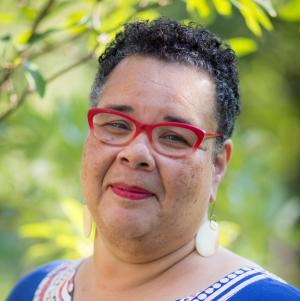
In the late 1980’s, the church I served had a large staff and a sanctuary worthy of rental for the filming of a professional TV Christmas special. On an otherwise humdrum day in March, word that Stevie Wonder was in the sanctuary spread like wild fire around the staff offices. Along with the gossip, came the foreboding reminder that staff were not to enter the space since it was being rented. Never having been one to follow foreboding reminders, I used my master key to make my way down the back stairway and into the sanctuary through a little known and rarely used door. The sanctuary was abuzz with a TV camera crew, producers, musicians, and many persons I could not identify. I made myself invisible and sat in a pew behind Vanessa Williams. I looked at the chancel–sure enough, Stevie Wonder was at the keyboard. The Harlem Boys Choir was gathered around the piano and sprinkled in the pews and chancel area. I was wide-eyed and amazed. What a moment! In not-too-long, the men Stevie Wonder was talking with left the chancel. Stevie Wonder started playing the keyboard. He looked up from the keyboard and called over to the church’s organist who was seated on the organ bench. Stevie Wonder said, “I feel like Malott’s Lord’s Prayer.” This piece of music is considered one of the music standards of African American church musicians; every church musician worth his/her salt knows this piece. The organist paused, called over to Stevie Wonder and asked, “Do you have the sheet music?” A nervous hush-your-mouth fell over the enormous room. It was one of those rare moments when the shock was so great things seemed to go into slow motion. Some of the shock came from the fact that a professional musician asked a blind man for sheet music. The rest of the guffaw came from the pronouncement that a professional church musician could not play this standard without reading it from sheet music. As providence would have it, the director of the Harlem Boys Choir had heard Stevie Wonder’s request and the organist’s embarrassing response. The Director pointed to one of the boys who was standing on the chancel steps. The boy, dutifully and without hesitation, ran to the piano and began playing Malott’s Lord’s Prayer. As soon as Stevie Wonder heard the piano sound, he joined in on keyboard. That afternoon, I sang Malott’s Lord’s Prayer with Venessa Williams, Stevie Wonder, and the Harlem Boys Choir. A few camera people and producers sang too. It was a triumphant moment of Christmas in March! Gardner Taylor, considered an extraordinary preacher, would leave his sermon manuscript, which he had spent the entire week poring over, in the middle of his desk, then go into the pulpit and preach. He would preach his sermon relying upon his preparation and the movement of the Holy Spirit. The reason we know this to be the case is that he never entered the pulpit with anything but a Bible in his hand and there are reams of Dr. Taylor’s sermon manuscripts. My former colleague, Otto Maduro, would lecture from post-it notes–only 3 or 4 for an hour lecture. Never did I see him stand and read aloud from a manuscript and always did he give an impassioned and informed lecture. About ten years ago I decided I knew the materials in my introductory course well enough that I would no longer use a manuscript for lectures. The first couple sessions, I was afraid I would forget something or leave out some vital aspect of theory. What I discovered was that rather than reading to my students, I began to talk with my students as I lectured. Without a manuscript, I was able to be present with them in a significantly different way. Being untethered from a manuscript allowed me to come from behind the podium; allowed me to watch their expressions and pay closer attention to their breathing; allowed me to think fresh thoughts as I talked. My glitch then and now is when a student wants me to repeat something verbatim. I say, “Hmmmm . . . I was not listening to myself.” Then a student (there is always one) who takes copious notes repeats what I said and we move on. Teaching without a manuscript allows me to gather-in previous conversations, items in the news, and the temperament in the room. I can have moments of scripted thoughts and I can have moments of improvisational musings which ground the discussion in the here-and-now. When I am free from a manuscript I can help students in meaning-making with the inflictions of my voice, the gestures of my body, based upon what I know of their own life experience. It makes me more agile, more dexterous, more in-tuned with a conversation between us rather than information from me to them. Lecturing without a manuscript has changed the tempo and rhythms of my teaching. I linger over notions when students signal they need more time and move quickly through items for which students signal they understand. I feel I have a better rapport with them because I am not focused on the page in-hand. I feel more free to teach. After doing this for ten-plus years, I am convinced that by the end of the semester I have covered as much or more intellectual terrain as I did when I had a manuscript. Like the piano-playing boy in the Harlem Boys Choir–there are some intellectual standards that I know, and letting go of the manuscript makes me better able to perform what I know with conviction and percussion. I can play it on cue, not in a mechanical or rote fashion, but in the moment and for the people who are also there to play. We learn, in these moments, to listen for each other. Highly respected musicians make it their craft to read the notes as printed, as intended by the composer, as expected by the listening audience when they are knowledgeable and ridged. The great work of composing music or writing a manuscript is not to be overlooked or belittled. Playing the music without interpretation, without deviating – trying to get it perfect--is a respected form, discipline, practice. Even so, there are genres of music and kinds of musicians who lift their heads from the sheet music and dare to interpret, dare to make the music their own in every moment. I want to teach, not toward the illusion of perfection, but toward authentic expression of my own voice, my own “take,” – exposing my students to my own spiritual authenticity. I suspect the boy who played for and with Stevie Wonder that day is now a man who still remembers that remarkable moment. I hope he is a man who still knows how to say “yes” to improvisation and the grace which comes with letting go.
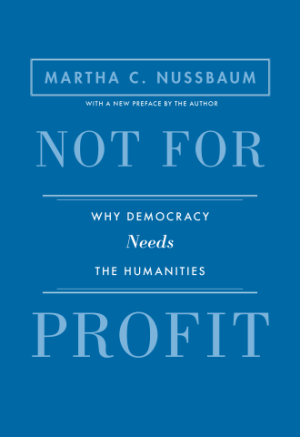
In this short and powerful book, celebrated philosopher Martha Nussbaum makes a passionate case for the importance of the liberal arts at all levels of education. Historically, the humanities have been central to education because they have been seen as essential for creating competent democratic citizens. But recently, Nussbaum argues, thinking about the aims of education has gone disturbingly awry in the United States and abroad. We increasingly treat education as though its primary goal were to teach students to be economically productive rather than to think critically and become knowledgeable, productive, and empathetic individuals. This shortsighted focus on profitable skills has eroded our ability to criticize authority, reduced our sympathy with the marginalized and different, and damaged our competence to deal with complex global problems. And the loss of these basic capacities jeopardizes the health of democracies and the hope of a decent world. In response to this dire situation, Nussbaum argues that we must resist efforts to reduce education to a tool of the gross national product. Rather, we must work to reconnect education to the humanities in order to give students the capacity to be true democratic citizens of their countries and the world. In a new preface, Nussbaum explores the current state of humanistic education globally and shows why the crisis of the humanities has far from abated. Translated into over twenty languages, Not for Profit draws on the stories of troubling—and hopeful—global educational developments. Nussbaum offers a manifesto that should be a rallying cry for anyone who cares about the deepest purposes of education. (From the Publisher)
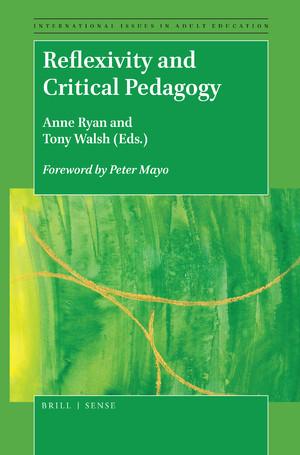
Click Here for Book Review This book would be especially helpful for educators and administrators hoping to equip their students with theoretical tools and practical exercises aimed at “bringing to light dynamics of power which privilege conformity” and “revealing the normally occluded dynamics of dominant discourse”(6). It is also a resource for those who see themselves occupying hybrid spaces; those who acknowledge a multiplicity of knowledges and competing and intersecting realities and experiences, who interrogate and trespass boundaries, and, overall, who strive to “see” the water in which they swim. - Katherine Daley-Bailey, University of Georgia Reflexivity and Critical Pedagogy highlights the essential nature of reflexivity in creating sites for transformative possibilities in education. The book argues that seemingly intractable epistemological inequalities are embedded within educational structures and processes and also contends that perspectives which define knowledge as a unitary truth are essentially inadequate to address current global problems. Further, it argues that people and ideas traditionally positioned outside the academy are vital to developing more effective educational interventions. This volume stresses the influence of dominant societal discourses in creating and sustaining particular and limited definitions of knowledge. It also explores their power in delineating acceptable processes of knowledge dissemination. These discourses, whether consciously or otherwise, indwell teachers, learners and policy-makers as well as educational structures and organisations. It proposes reflexivity as the key component needed to combat such forces and one that is an essential ingredient in critical pedagogy. (From the Publisher)